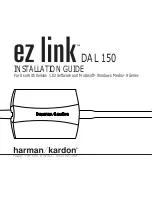
Cycle application
Charge method: 2.45V/cell with limited current of 0.25 C
20
(A).
Charge voltage must be adjusted according to ambient temperature, temperature
compensation coefficient is -4mV/cell/
℃
.
When charged capacity is about 105-110% of discharged capacity or in constant voltage case,
the charge current must be kept unchanged for 3 hours in the final stage of charge., charge is
ended.
Fast charge
Increasing the charge voltage to 2.40V per cell can reduce recharge time and it is possible,
depending on the depth of discharge, to half the recharge time. Under these conditions,
however, the charge must be monitored and must be terminated when the charge current
remains reasonably steady for 3 hours after the voltage limit has been reached. At the
beginning of charge the current must be limited to 0.3C
20
(A)
Ripple current
The ripple content of the charging current affects the life of the battery. It is recommended to
limit the continuous Ripple current to 0.05C
20
(in amperes) as recommended value (never
exceed 0.1C
20
). Transient and other ripple type Voltage excursions can be accommodated
provided that, with the battery disconnected, the system peak to peak voltage including
regulation limits falls within 2.5% of the recommended float voltage of the battery.
Battery Calculations
Floating applications
A battery application is characterized by:
A voltage which must be held within certain limits;
A power level which must be delivered;
A set capacity to maintain the load in terms of time.
By the use of these three parameters, calculations can be affected as follows:
A situation requires: a maximum voltage of 490 volts a minimum voltage of 378 volts;
The ambient temperature is 25
℃
;
The float voltage is to be 2.27V per cell.
O
pe
ra
tio
n
an
d
m
ai
nt
en
an
ce
16
Summary of Contents for sp series
Page 1: ......










































